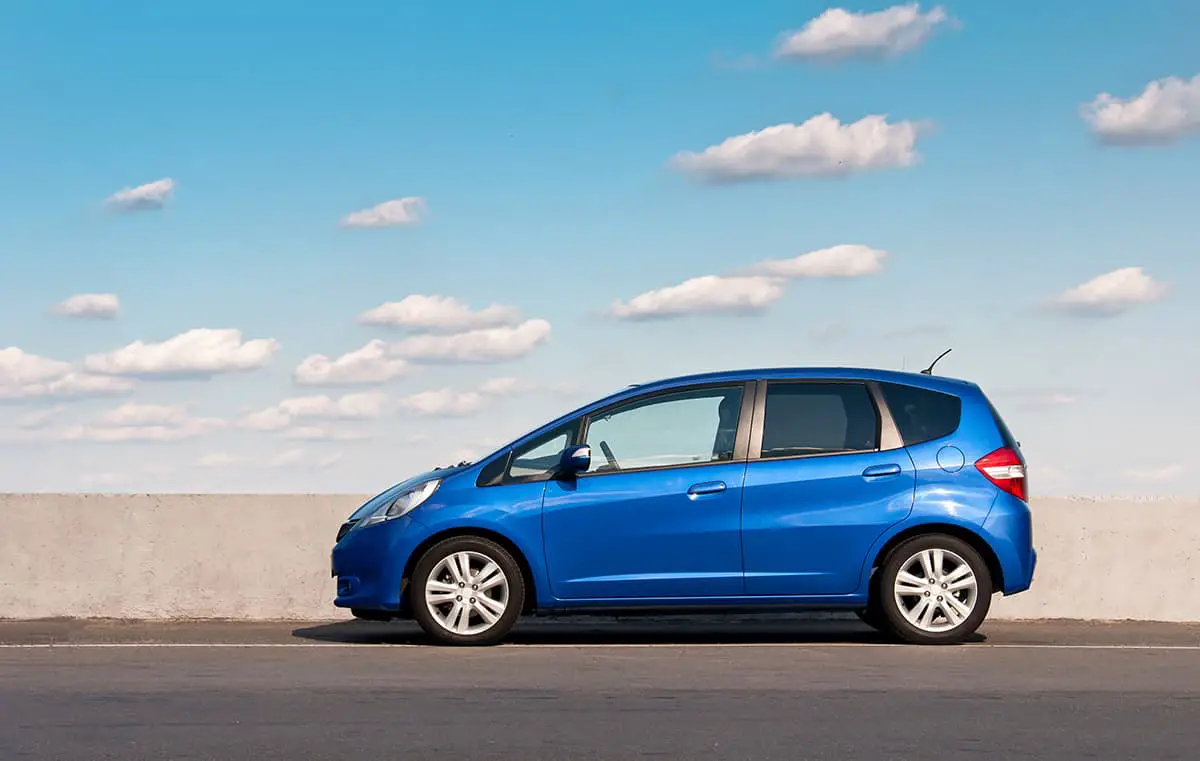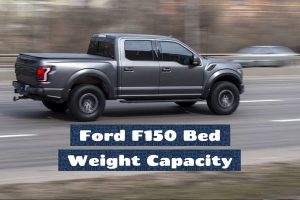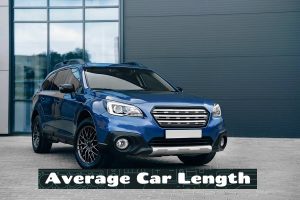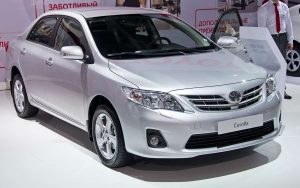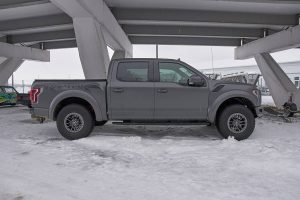If you open the catalog of a new car and look at the dimension specs, you’ll find a width value. The width of a car refers to the distance between each side, with or without the side mirrors. So, how wide is the typical car?
On average, a car measures 5.8 feet or about 69.6 inches wide. The precise width measurement varies from car to car, especially when you look at different vehicle types.
In this guide, I’ll describe why the dimensions of a car matter in the first place, as well as provide charts explaining the average width based on car types.
Car Dimensions
One of the first things that pop out when you open a catalog for a new car is the dimension specs. That section will always include at least 3 things—the length, height, and width of a car.
The length of a car measures the distance between the 2 farthest points between the front and back of a car. In many cases, the length will refer to the distance between the front and back bumpers.
The height of a car measures the distance between its lowest and highest points. This figure will usually refer to the distance between the ground and the top of the roof rails if available.
Finally, a car’s width is the distance between the widest point of the left and right sides. Many car catalogs will refer to the width with the side mirrors folded out, with the side mirrors folded in, and without the side mirrors at all.
Average Width of a Car
As indicated above, the average width of a car will be around 5.8 feet or a sliver under 5 feet 10 inches.
Of course, when you take the various car styles into account, you’ll realize just how skewed the data is. For instance, a Hummer measures 86.5 inches wide with its side mirrors, while a Mini Cooper is far narrower at 68 inches.
If you’re in the market for a brand-new car, the best way to accurately gauge the car’s width is by looking at its type.
Car Widths by Type
Below, I’ll briefly explain 10 common vehicle types, as well as provide a chart that shows the width of the most popular cars of that type.
SUV
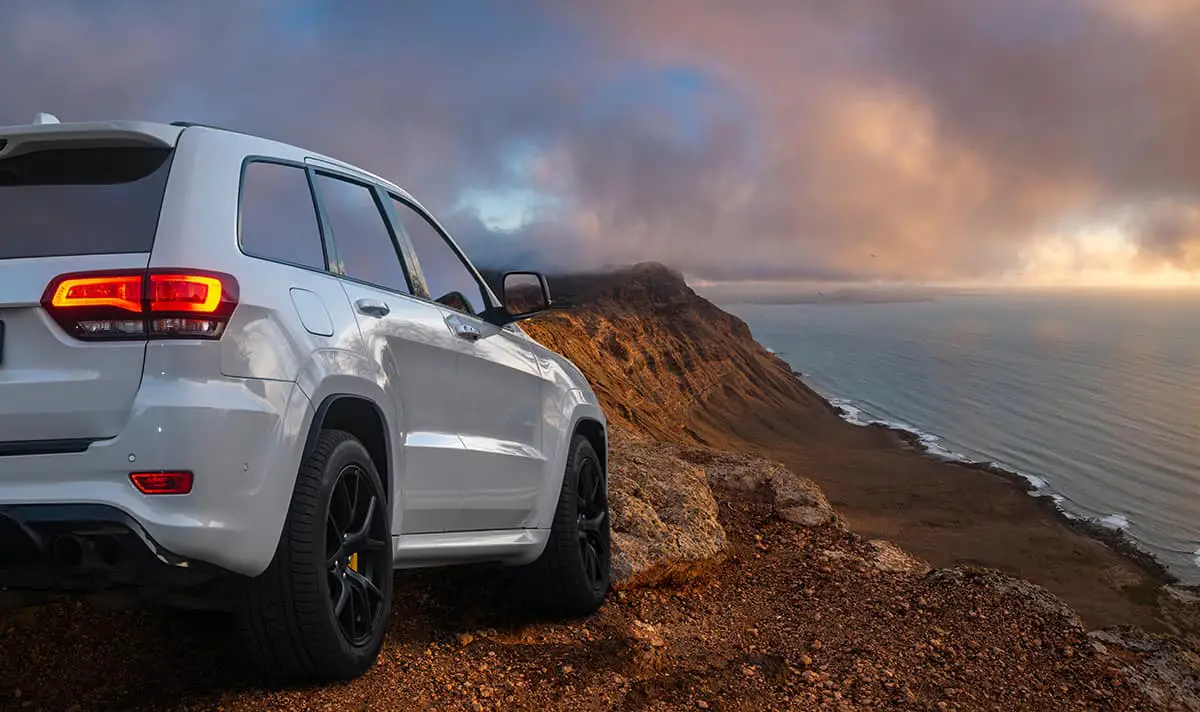
The off-road capability and spacious interior are the defining characteristics of most SUVs. Even on difficult, rough cross-country terrain, they provide a smooth ride. SUVs provide a higher vantage point from the driver’s seat to improve visibility. To that end, an SUV may be the best option if you’re planning on towing dirt bikes as part of your love for the great outdoors.
| SUV Makes and Models | Width (w/o mirrors) |
| Mazda CX-5 | 83.3 in. |
| Hyundai Tucson | 73.4 in. |
| Honda CRV | 73.0 in. |
| Genesis GV70 | 75.2 in. |
| BMW X3 | 74.4 in. |
| Mercedes-Benz GLC-Class | 74.8 in. |
| Mazda CX-30 | 70.7 in. |
| Kia Soul | 70.9 in. |
| Hyundai Kona | 70.9 in. |
| BMW X1 | 71.7 in. |
| Average | 73.8 in. |
Source: Edmunds
Hatchback
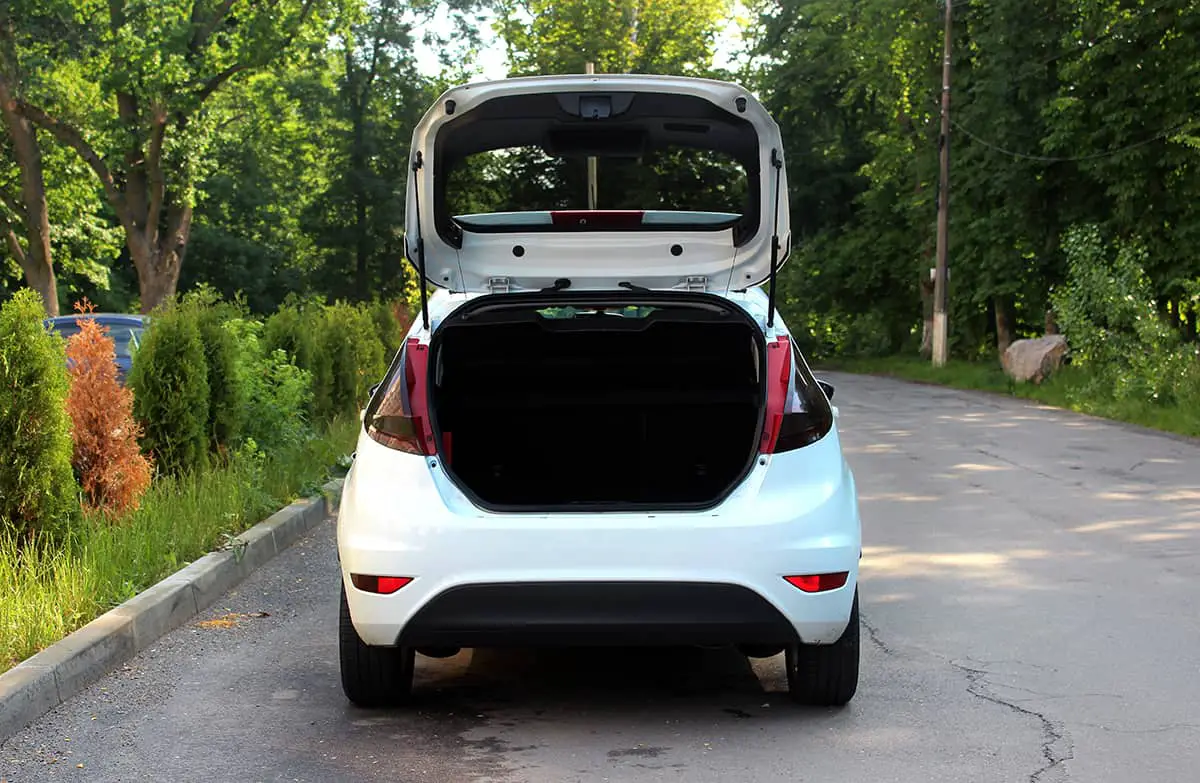
The hatch, or upward-opening rear door, is the most distinctive feature of a hatchback. Counting the trunk door, it can have anywhere from two to four doors. Both hatchbacks and sedans fall under the category of passenger cars and share many similarities. The capacity to carry goods is the primary distinction between the two. The cargo capacity of hatchbacks is greater than that of sedans.
| Hatchback Makes and Models | Width (w/o mirrors) |
| Ford Focus | 71.8 in. |
| Volkswagen Golf | 70.4 in. |
| Peugeot 208 | 68.0 in. |
| Volkswagen Polo | 69.0 in. |
| Mercedes A-Class | 78.4 in. |
| BMW 1 Series | 68.8 in. |
| Mazda 3 | 70.7 in. |
| Skoda Octavia | 71.0 in. |
| Toyota Corolla | 70.1 in. |
| Mini Cooper | 68.0 in. |
| Average | 70.6 |
Source: Edmunds
Crossover
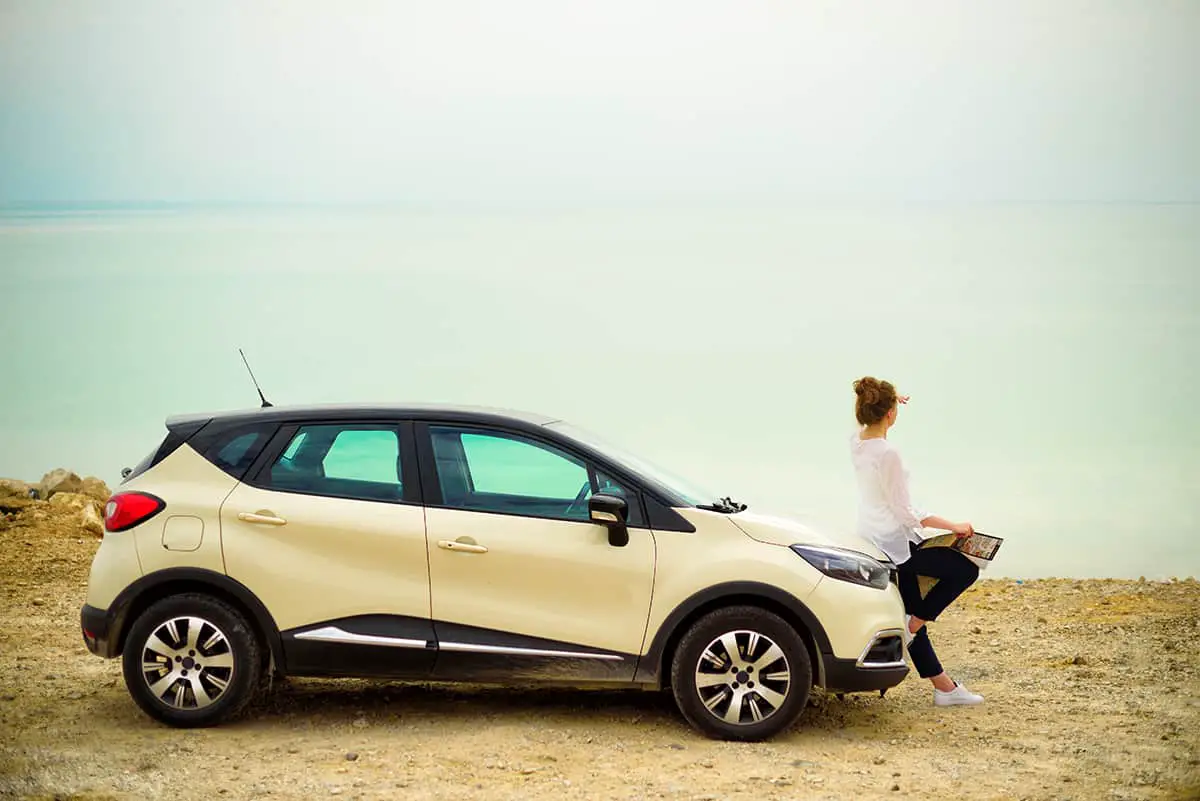
Appearance-wise, a crossover looks like a combination between an SUV and a hatchback. Crossovers combine the utility of SUVs with the fuel efficiency of hatchbacks by using a unibody chassis, which is both lighter and more fuel efficient than the conventional methods.
| Crossover Makes and Models | Width (w/o mirrors) |
| Kia Telluride | 78.3 in. |
| Hyundai Tucson | 73.4 in. |
| Cadillac Lyriq | 77.8 in. |
| Hyundai Palisade | 77.8 in. |
| Kia EV6 | 74.0 in. |
| Hyundai Ioniq 5 | 74.4 in. |
| Ford Mustang Mach-E | 74.1 in. |
| Jeep Grand Cherokee | 76.5 in. |
| Subaru Forester | 71.5 in. |
| Hyundai Santa Fe | 74.8 in. |
| Average | 75.2 in. |
Source: Edmunds
Convertible
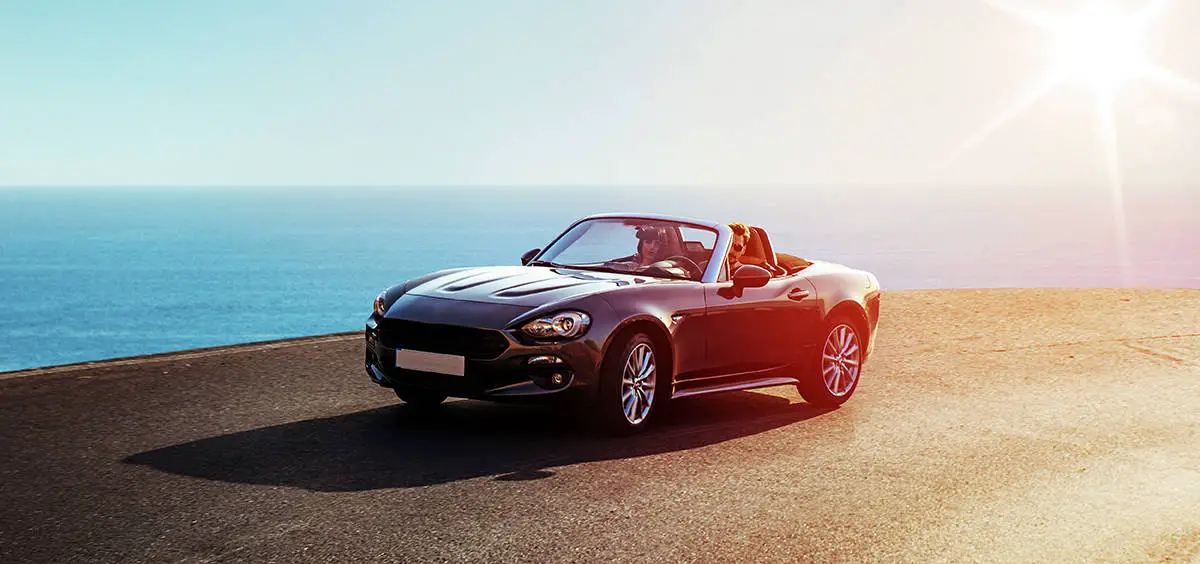
A convertible or cabriolet is a type of car in which the roof can be folded back or removed. It is possible to choose between a hard top and a soft top for the roof. Whether it’s made of metal or plastic, a hard top can be operated automatically. While a vinyl or canvas soft-top roof can be easily folded up or down. Due to its sophisticated looks and liberating ride, many people consider convertibles to be luxury vehicles.
| Convertible Makes and Models | Width (w/o mirrors) |
| Jaguar F-Type | 74.2 in. |
| Chevrolet Camaro | 74.7 in. |
| BMW Z4 | 73.4 in. |
| Audi TT | 72.1 in. |
| Audi A5 | 72.5 in. |
| Mazda MX-5 Miata | 68.3 in. |
| Porsche 911 | 72.9 in. |
| Porsche Boxster | 70.9 in. |
| Chevrolet Corvette | 76.1 in. |
| Mercedes-AMG C43 | 79.5 in. |
| Average | 73.5 in. |
Source: Edmunds
Sedan
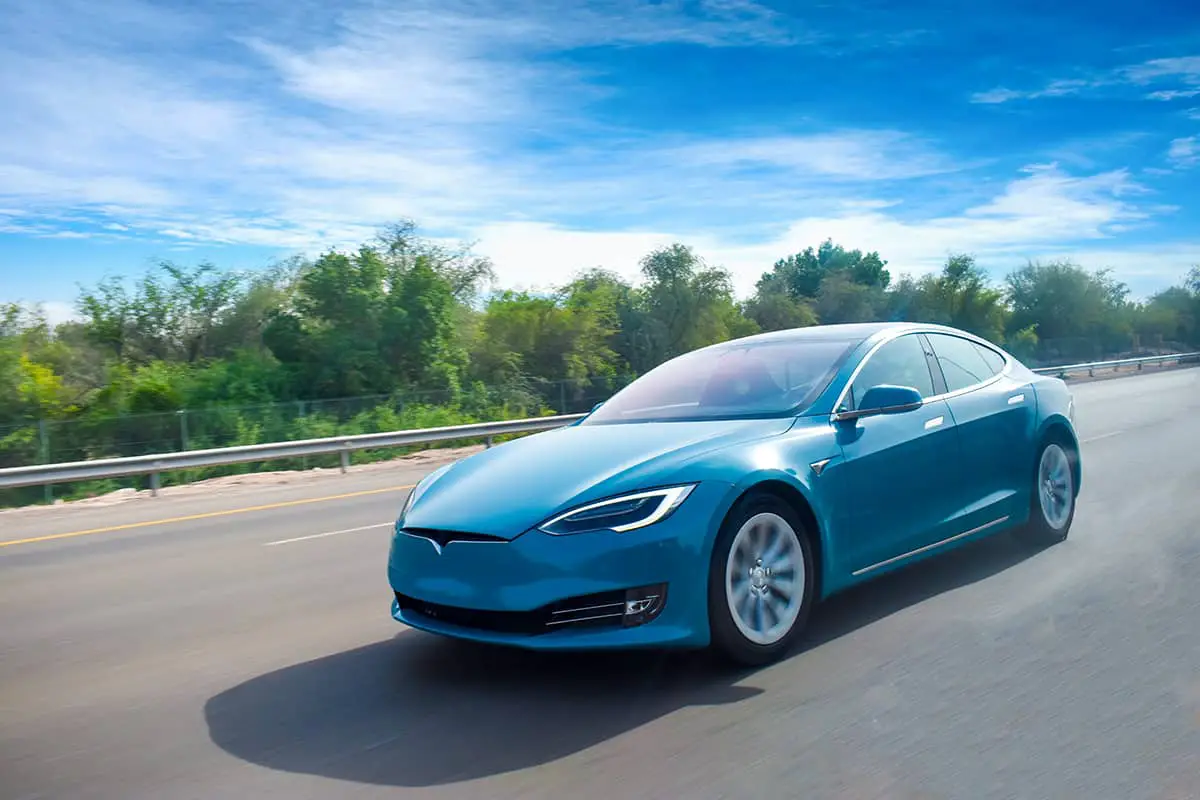
A sedan is a common type of passenger car with four doors. Sedans commonly use a three-box layout, which divides the car into sections for the driver, passengers, and cargo, to evenly distribute the vehicle’s mass and improve handling. In addition, the vehicle’s unibody design reduces weight, which improves gas mileage.
| Sedan Makes and Models | Width (w/o mirrors) |
| Hyundai Accent | 68.1 in. |
| Kia Rio | 67.9 in. |
| Honda Civic | 70.9 in. |
| Hyundai Elantra N | 71.9 in. |
| Volkswagen Jetta GLI | 70.8 in. |
| Honda Accord | 73.3 in. |
| Hyundai Sonata | 73.2 in. |
| Kia K5 | 73.2 in. |
| Tesla Model 3 | 72.8 in. |
| Alfa Romeo Giulia Quadrifoglio | 73.7 in. |
| Average | 71.6 in. |
Source: Edmunds
Pickup

Pickup trucks have all the makings of being reliable and versatile vehicles. Pick-up trucks can have either two or four doors and an open bed for carrying cargo. It is common for pickup trucks to have a 4WD system that is optimized for off-road driving or towing. Pickup trucks are ideal for motorists who frequently transport cargo.
| Pickup Makes and Models | Width (w/o mirrors) |
| Ford F-150 | 79.9 in. |
| Toyota Tundra | 80.2 in. |
| Ford Ranger | 73.3 in. |
| Toyota Tacoma | 75.2 in. |
| Chevrolet Silverado 1500 | 81.2 in. |
| Jeep Gladiator | 73.8 in. |
| Ford Maverick | 83.5 in. |
| Honda Ridgeline | 78.6 in. |
| Hyundai Santa Cruz | 75.0 in. |
| Rivian R1T | 81.8 in. |
| Average | 78.3 in. |
Source: Edmunds
Station wagon
Station wagons, also known as estate cars, are essentially sedans that have been stretched out in order to accommodate more cargo. It’s easier to picture it as a cross between a sedan and a hatchback. As a trusted people carrier, a station wagon is ideal for big families on the go. Station wagons offer better fuel economy than SUVs, in addition to more space.
| Station Wagon Makes and Models | Width (w/o mirrors) |
| Subaru Outback | 73.0 in. |
| Audi A4 Allroad | 72.5 in. |
| Volvo V60 | 80.3 in. |
| Mercedes-Benz E-Class | 71.7 in. |
| Volvo V90 | 74.6 in. |
| Porsche Panamera Cross | 78.2 in. |
| Porsche Taycan Cross | 77.4 in. |
| Audi RS6 Avant | 76.8 in. |
| Saab 9-3 Turbo X | 69.0 in. |
| Cadillac CTS-V Wagon | 72.5 in. |
| Average | 74.6 in. |
Source: Edmunds
Minivan

Minivans’ primary selling points of convenience and safety have not lost any of their clout as family automobiles. Minivans are popular among families because of the van’s spacious interior and convenient sliding door. Minivans are vastly more comfortable than station wagons when transporting a large number of children because of their spacious interiors and low entry heights.
| Minivan Makes and Models | Width (w/o mirrors) |
| Honda Odyssey | 78.5 in. |
| Kia Carnival | 78.5 in. |
| Chrysler Pacifica | 79.6 in. |
| Toyota Sienna | 78.5 in. |
| Chrysler Voyager | 79.6 in. |
| Ford Transit Connect | 84.1 in. |
| Mercedes-Benz Metris | 75.9 in. |
| Mercedes-Benz Sprinter | 79.5 in. |
| Dodge Grand Caravan | 78.7 in. |
| Nissan Quest | 77.6 in. |
| Average | 79.1 in. |
Source: Edmunds
Coupe
The term “coupe” evokes the images of a compact sedan: a two-door car with a trunk and a fixed roof. But the exciting appeal of the vehicle is its sloping roofline which gives it a more sleek, sporty look. As much as its appearance would suggest, a coupe is typically loaded with extra bells and whistles, from sharp handling to hundreds of horsepower.
| Coupe Makes and Models | Width (w/o mirrors) |
| Toyota GR86 | 69.9 in. |
| Subaru BRZ | 69.9 in. |
| Toyota Supra | 73.0 in. |
| BMW 2-Series | 72.4 in. |
| BMW M4 | 74.3 in. |
| Ford Mustang Shelby GT500 | 76.7 in. |
| Chevy Camaro ZL1 | 75.0 in. |
| Mercedes-AMG C43 | 71.3 in. |
| Porsche 718 Cayman | 70.9 in. |
| Dodge Challenger | 75.7 in. |
| Average | 72.9 in. |
Source: Edmunds
Sports car
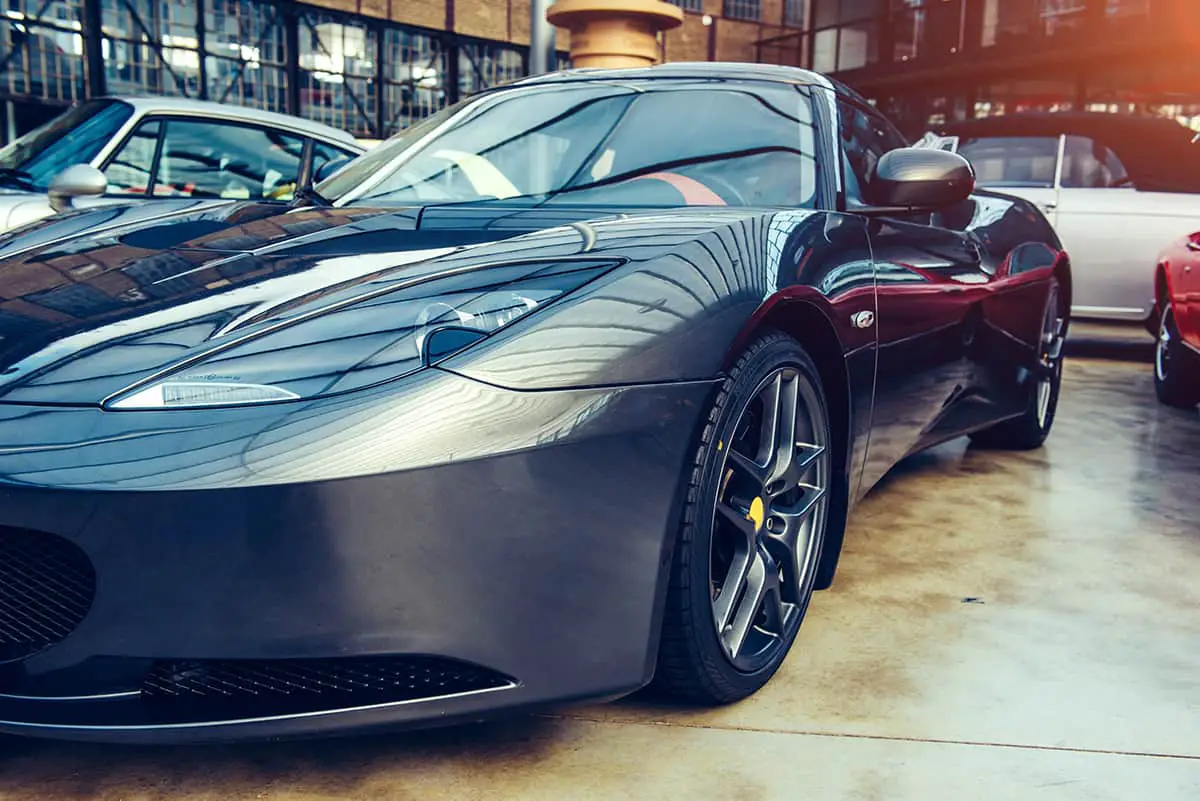
Sports cars are typically two-seater convertibles with an aggressive exterior design. Sports cars have a lot of power and a thrilling ride thanks in large part to the amazing features automakers have built into them, such as the car’s nimble handling, excellent acceleration, and great acceleration.
| Sports Car Make and Models | Width (w/o mirrors) |
| Chevy Corvette | 76.1 in. |
| Porsche 718 Boxster | 70.9 in. |
| Ferrari F8 | 77.9 in. |
| Maserati MC20 | 86.0 in. |
| McLaren 720S | 85.1 in. |
| Lexus LC | 75.6 in. |
| Acura NSX | 76.3 in. |
| Alpine A110 | 70.4 in. |
| Cupra Formentor | 72.4 in. |
| Lexus LC 500 | 75.6 in. |
| Average | 76.6 in. |
Source: Edmunds
